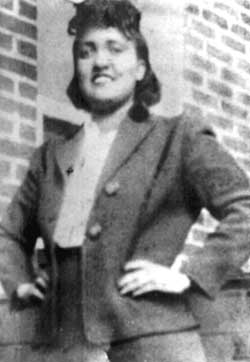Listening to Strange the Things by Smoke Fairies (Shh! Don't tell them).
Many Books - too many to list though the last one is worth mentioning it being The Immortal Life of Henrietta Lacks by Rebecca Skloot which tells the story of the black American whose cervical cancer cells became the first immortal human cell line when they were taken from her in 1951. The cell line called HeLa, has been propagated and used for testing many many medical advances from Salk's polio vaccine to modern anti-AIDS drugs. Henrietta Lacks died without knowing any of this and yet today, the HeLa cell line has become a foundation of huge amounts of medical research and is so hardy that without proper procedures it can and does escape to confound other research. All of this happened without consultation with anyone in Henrietta's family who now are understandably angry that many commercial laboratories made money from selling the line. The scientist who first developed HeLa, made it available to anyone who could find a use for it but further down the line it has become a lucrative product for many less-principled people. None of the family's concerns about the financial remuneration that they might have received has any basis in law both in 1951 and now, though rudimentary legislation is in place to try and address this. The most terrible thing is that when some biologists found out where the relatives lived, under the guise of testing Henrietta's children for cancer, they took blood samples which they thought might help them do further research on the cells.
Although this is science writing, the author has started from the direction of Henrietta being a person and not a cell line. It brings alive both all the people involved and the science that has been carried out on HeLa since it was first cultured. I first read about HeLa in Omni magazine in the late 70s and from what I recall, the framework of the article was the general g-whizz amazingness of the fecundity of the cells themselves rather than the human aspect of the woman from whom they came. I am glad that TILOHL has redressed that. The surviving family are made interesting and real through not ignoring their flaws. It could have been easy to give them a free-pass after what has happened to them both at the hands of scientists and the "system" in general. Henrietta's daughter Deborah, is the focus of the family in the story and is funny and tortured at the same time. It is moving to read about the discovery of the medical records of her sister Elsie who was committed to a Hospital for the Negro Insane diagnosed with Epilepsy, Palsy and "Idiocy". She turned from a happy child to a broken shell after apparently being subjected to Pneumoencephalography, a horrific technique for examining the brain involving replacement of the fluid surrounding the brain with air in order to make X-Rays clearer. This practice was only stopped in the 1980's. And we still call ourselves civilized.
I seem to have got off topic simply because that was one of the most memorable sections of the book. This is a science book that reads like a novel and yet does not skip the technical aspects. The academic rigour is plain to see from the exhaustive notes and the careful list of acknowledgments which indicate the amount of work that Rebecca Skloot put into the book.


No comments:
Post a Comment